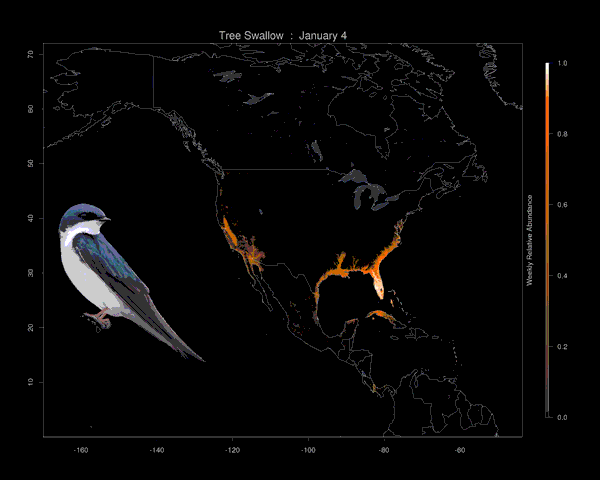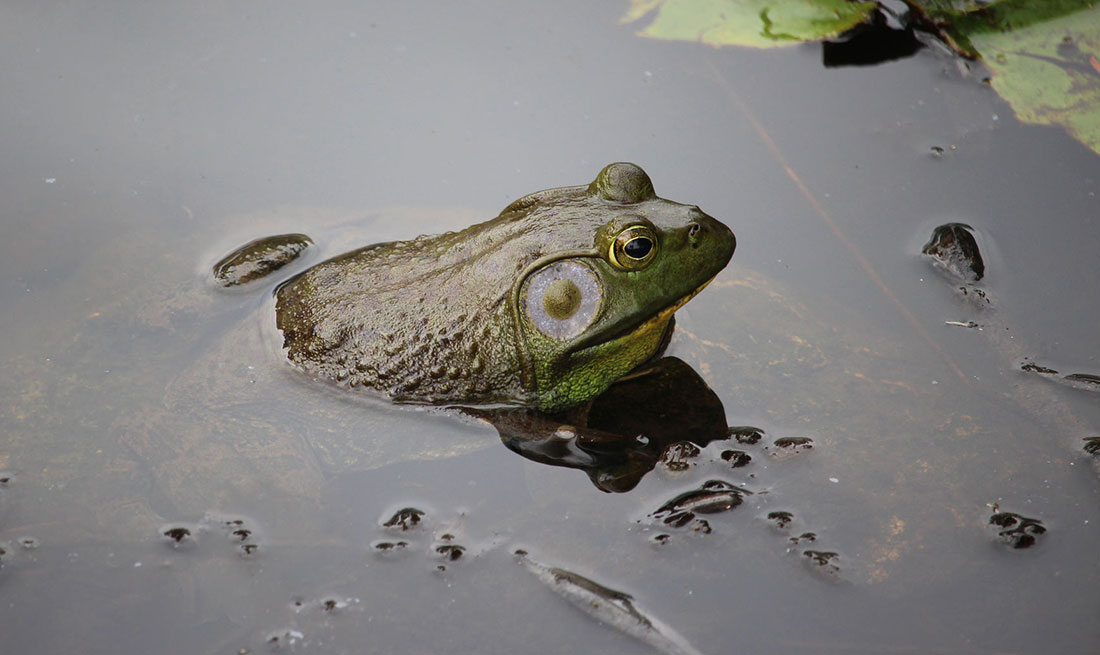By Teresa Manring
Ribbit. Croak. Chirp. Peep.
Every frog has a unique call.
You can stand at the edge of the pond in your local forest preserve and listen for the throaty, exuberant rattle of the cricket frog, or try to pick out the high-pitched chortle of the northern leopard frog — and you can contribute to conservation research while listening to the chorus.
Identifying the calls of local frogs and toads, reporting sightings of thousands of bird species, hunting for rare and endangered plants, photographing bees and butterflies: citizen scientists are doing all of this and more. Their observations in their own backyards and across the world are helping researchers to track and conserve plants and wildlife.
Citizen science recruiters seeking new volunteers shared the impact of ongoing projects at The Peggy Notebaert Nature Museum’s inaugural citizen science fair on Saturday. The 15 projects featured ranged from the fairly small and very local “Calling Frog Survey,” which trains volunteers to identify the calls of frogs and toads native to the Chicago region, to international projects such as eBird, which uses data submitted by bird watchers to monitor populations all over the world.
Conservation – with the added urgency of climate change transforming habitats and migration – connects many of the initiatives.
“Conservation projects require citizen participation,” said Laura Saletta, the museum engagement lead and one of the fair’s organizers. The collective efforts of volunteers surpass what scientists alone are capable of observing, Saletta explained. Volunteers usually only need a smartphone, camera or a computer to collect data and submit their sightings.
Chicagoan Beth Beyer came to the fair to see what kind of citizen science projects her son, a sophomore in high school, would be able to get involved in. “I’m definitely a big citizen scientist myself,” Beyer said, noting that she has organized projects for her kids in the past, such as testing the water quality of Lake Michigan.
Volunteers of all ages, from scouts to retirees, participate in citizen science projects, said Jamie Forberg, director of one of the museum’s in-house citizen science projects, The Calling Frog Survey.
All that’s required for volunteers to participate in the frog-monitoring project is to attend one workshop and make three field visits per year to locations in the Chicago wilderness region to record which local frogs and toads they can hear. The project currently has about 60 volunteer “froggers,” whose efforts help protect frog and toad populations in the Chicago region.
When land managers are doing a habitat restoration project, “the data can tell them if frogs have recolonized or if populations are up,” said Forberg. “That means they’re doing something right and they may want to continue to do that to manage the land.”
“I think the people who participate just love frogs,” Forberg said. “Either they really love them because of their physical characteristics or because of their calls. They’re pretty adorable.”

Citizens participating in science projects and data collection is a time-honored tradition. But technological innovation means that today, just about anyone can join in.
This ranges from the casual observer “to somebody who wants to jump in hip deep to make a difference in a restoration or conservation project who’ll go as far as training programs and traveling to do it,” Saletta said.
Many projects also make their data available to the public online, which means almost everyone, from scientists to activists to the merely curious, can access information such as population numbers and migration patterns.
The Chicago Ornithological Society uses data from the citizen science project eBird to help protect bird habitats in the Chicago area.
“Let’s say someone is trying to propose some new building in the wetlands,” explained Christine Williamson, the co-chair of the COS, “we used to just say ‘a lot of birds use it.’ But now we can say, ‘This many birds, of these many species, are here between these times of year.’” The precise stats that eBird provides are more convincing when it comes to conservation, said Williamson, who represented eBird at the fair.
More than 100,000 users from all over the world record their bird sightings on eBird. Together, they report an average of 5.6 million bird sightings per month. The project, which was launched in 2002 by the Cornell Lab of Ornithology in Ithaca, New York, allows users to submit their bird sightings both through the eBird website and its app, and engage with others’ submissions in unique ways.
Users can view interactive maps to monitor the location of “birding hotspots,” notice how common different types of birds are in various areas, and follow along with real-time submissions as other birders spot birds from every corner of the globe.

Well, almost every corner.
“We don’t have very many people reporting sightings in Siberia because it’s such a harsh climate. But pretty much everywhere else in the world we have people who are reporting all the time,” said Williamson. “The Arctic gets a little sparse as well,” she added.
eBird also gives birders the opportunity to view profiles of the platform’s other users, including which types of birds they’ve spotted as well as photos and videos of the encounter.
“Birders are competitive so they don’t mind at all showing everybody what [type of bird] they saw,” said Williamson.
It may be that competitive spirit that keeps people engaged in some projects. But Saletta hopes that the bigger picture of environmental conservation will be enough to inspire more people to get involved.
“We have responsibilities as the thumb-having, upright-walking stewards of the world to assimilate into the natural world in the most responsible and best way possible,” said Saletta. “Signing up for a citizen science project is a way to do this.”


